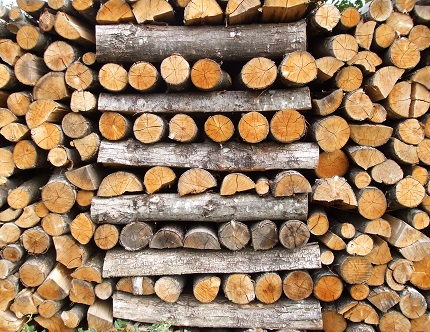Burning the Right Firewood Matters
 Have you ever burned wood in your fireplace or wood-burning stove that caused your home to fill with smoke, or produced a bad odor, or irritated your skin? The firewood you choose can affect:
Have you ever burned wood in your fireplace or wood-burning stove that caused your home to fill with smoke, or produced a bad odor, or irritated your skin? The firewood you choose can affect:
- The efficiency of your fire.
- You and your family’s health and safety.
- Environmental protection.
- The safety of your home due to increased chimney fire risk.
Before you burn your next fire, make sure you follow these tips, so you choose the right firewood.
Burn Dry Seasoned Firewood
When selecting firewood, knowing the moisture content of the wood is important. Select firewood that is dry and well-seasoned before you use it.
Freshly cut wood or “green wood” contains moisture – anywhere from 35% to 80%. Green wood shouldn’t be used fires since it:
- Takes longer to ignite.
- Doesn’t burn as efficiently.
- Creates more smoke.
- Produces creosote which can stick to the inside walls of your flue and lead to a chimney fire.
Use firewood that has been dried out or seasoned for at least 12 months. To season wood, cut and/or split the wood 12 months before use. Stack the wood to enable air flow on both ends of the wood. Cover the wood to keep it dry from rain and snow.
To burn more efficiently, seasoned wood should only have a moisture content of 15% to 20%. Use a moisture meter to test the wood.
Seasoned firewood will burn cleaner with less smoke and fumes while creating a hotter fire. Plus your flue will have less creosote buildup over time.
Woods to Never Use
Some types of wood you should never burn in your fireplace or stove include:
- Leftover treated lumber or painted, stained or glued wood. Burning these woods can release chemicals and toxins, like lead or arsenic, that are unhealthy to you and your family as well as the environment. These chemicals and toxins can also damage your fireplace or stove.
- Wood from poisonous plants. Burning poisonous plants, like poison oak, poison sumac or oleander, can produce smoke that may be irritating to your skin, nasal passages and lungs.
- Rotted, diseased or moldy wood. Burning these woods can produce a horrible odor. Plus the bacteria, mold, mildew and fungus in these woods can make you sick.
By following these tips, you can ensure you’re building a fire that will burn efficiently while keeping you, your family and the environment safe.
Also remember to always have your fireplace or wood-burning stove inspected and cleaned annually by the professional chimney sweeps at T.J.’s Chimney Service in Greenfield, IN. Our professionals will ensure your fireplace or stove stays in top condition year after year. Contact us to schedule your appointment.

